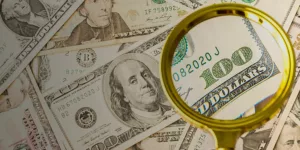Counterfeit goods are a major concern for businesses in many sectors, notably digital resellers and luxury brands. It has become increasingly difficult to tell the difference between a fake and the real thing as imitators learn better and better ways to simulate the appearance of the actual brand.
Luckily, many businesses have started using better technology in the ongoing fight against counterfeit goods. As demand increases, more tools have been created to crack down on imitators in various ways. These five tools are continually being used to identify counterfeit items.
Laser Technology
While lasers are more commonly associated with futuristic and sci-fi tech, they’ve found an important practical application in making it difficult to imitate goods. Laser technology has been so successful that, in some cases, it’s even required in an attempt to reduce counterfeiting.
Laser engraving machines, for example, can be used to mark anything from medical tech and industrial parts to medications and oyster shells (yes, really). Laser marking is an easy, safe way to uniquely mark goods, as it is extremely precise and does not put any potentially harmful material on the items.
Security Inks
Security ink is another common method of marking items in a way that imitators won’t be able to match. You’ve probably used industrial ink in a variety of contexts without even knowing it—some of its common, day to day applications include checks, passports, and other important documents.
These inks come in a wide range of forms, each best suited to a particular situation. Reactive ink, for example, can detect any changes to an existing document, which is especially important for checks. There’s also optically variable ink, which appears in different colors depending on the angle and is used in passports.
Unique Marking Patterns
Unique marking patterns, like those seen on currency, are a well-known method of identifying counterfeit items. These watermarks and other marking are intended to be unique and extremely difficult to accurately imitate, ensuring that it’s easy to spot any counterfeit currencies.
But these patterns have important applications in the private sector, as well. Many businesses create a marking specific to their company and use a special type of thread that can only be seen under specific lighting. Plastic-based products can be uniquely identified using pigments and additives specifically designed for this use.
Deep Learning
Deep learning technology is already being leveraged in a variety of contexts, including everything from translation and language recognition to image recognition and toxicology. Still a relatively new development, many industries are still finding new and unique ways to leverage deep learning.
One of the lesser-known applications of deep learning is in the hunt for counterfeit goods. As the technology used in imitation has become increasingly difficult to stay in front of, some counterfeit products can’t be distinguished visually, even by experienced experts.
Entrupy is a device capable of immediate recognition of imitation goods. It can take photos on a microscopic level while accessing a massive number of comparable pictures of both real and fake products. Its incredible success rate—97%—is already attracting investment and attention from all corners of the market.
Blockchain
Like deep learning, blockchain technology is already an important factor in many industries, and new applications are continually being discovered. While most people associate blockchain with cryptocurrencies, they’re less aware of its other uses, including identifying counterfeit goods.
Multiple British whisky companies are using blockchain technology to ensure that each bottle is from the correct source. Public traceability—the same factor that has made it so useful in fields like cryptocurrencies—also allows each bottle to be identified from manufacture to the final sale.
Unlike the other items on this list, blockchain doesn’t rely on visual identification to determine a product’s authenticity, which may make it more reliable. Customers can simply scan a QR code on the bottle to get more information about its path through the production process.
Counterfeiting is an industry of hundreds of billions of dollars every year, and there’s a long way to go in the fight to get rid of imitation products. While many of these tools are already being used effectively to identify irregularities, companies are also finding new applications and new technologies to apply to this issue. Each of the five items on this list has helped reduce the number of counterfeit products on the market.








